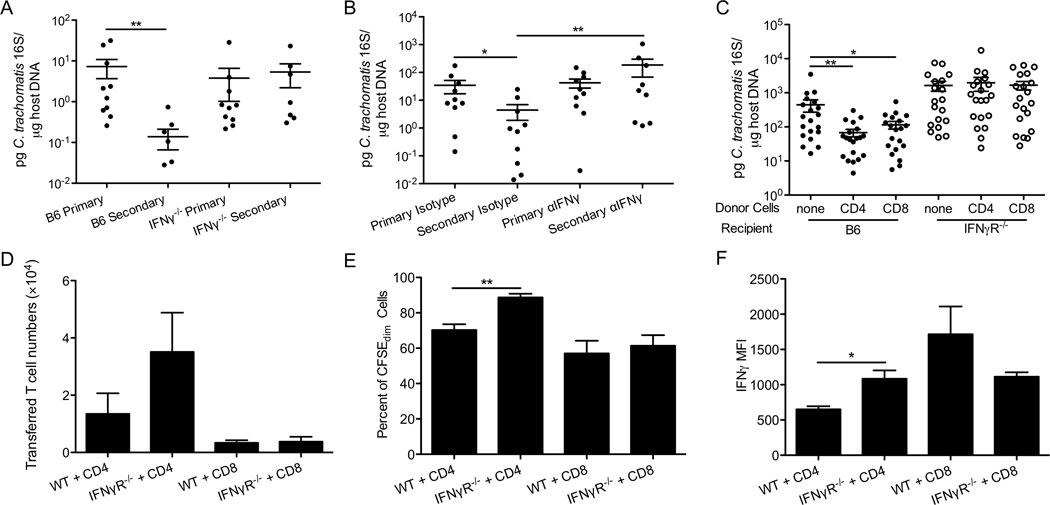Figure 7.
T cell-mediated cross-mucosal protection against C. trachomatis is dependent on IFNγ. (A) Groups of 6–10 C57BL/6 and IFNγ−/− mice were intranasally immunized with 100 IFU of C. trachomatis. A month later, these mice and naïve mice were challenged in the genital tract. Bacterial burden was determined 3 days post-challenge by quantitative PCR. (B) Groups of 9–10 C57BL/6 mice were intranasally immunized with C. trachomatis. A month later, these mice and naïve mice were treated with IFNγ-neutralizing or isotype control antibodies, and then challenged in the genital tract. Bacterial burden was determined by quantitative PCR 5 days after challenge. (C-F) Groups of 19–20 CD90.1+ mice were intranasally immunized with C. trachomatis. A month later, CD4+ or CD8+ T cells were purified from their SLOs, labeled with CFSE, and transferred into CD90.2+ wt or IFNγR−/− mice. These mice and control mice that did not receive any T cells were then challenged in the genital tract. Five days later, (C) bacterial burden was determined by quantitative PCR. (D) Absolute number of donor cells, identified as CD90.1+CD4+ or CD90.1+CD8+, (E) percent of donor cells that were CFSEdim, and (F) IFNγ MFI of donor cells in the uterine tissues were determined by intracellular staining and flow cytometry. These data are representative of 2 independent experiments. *: p ≤ 0.05. **: p ≤ 0.01

